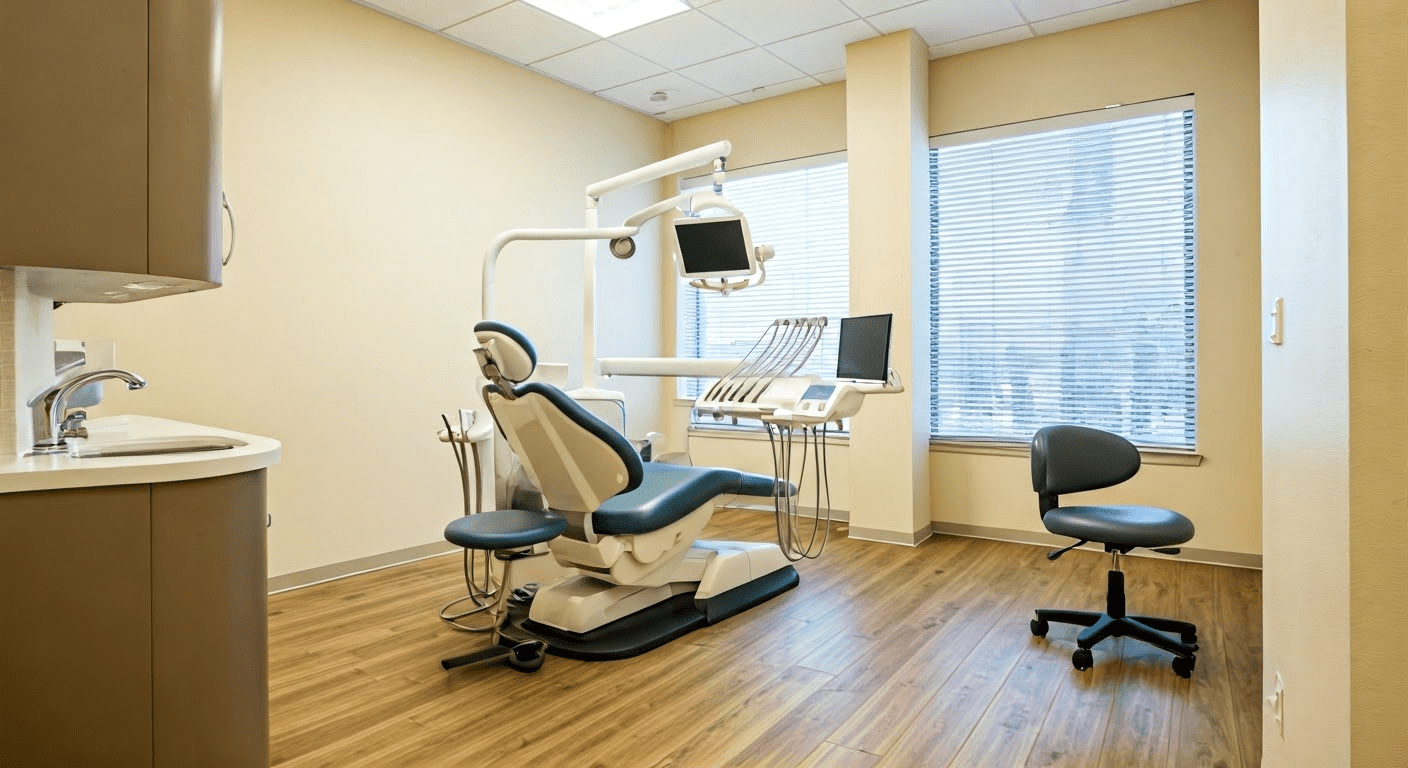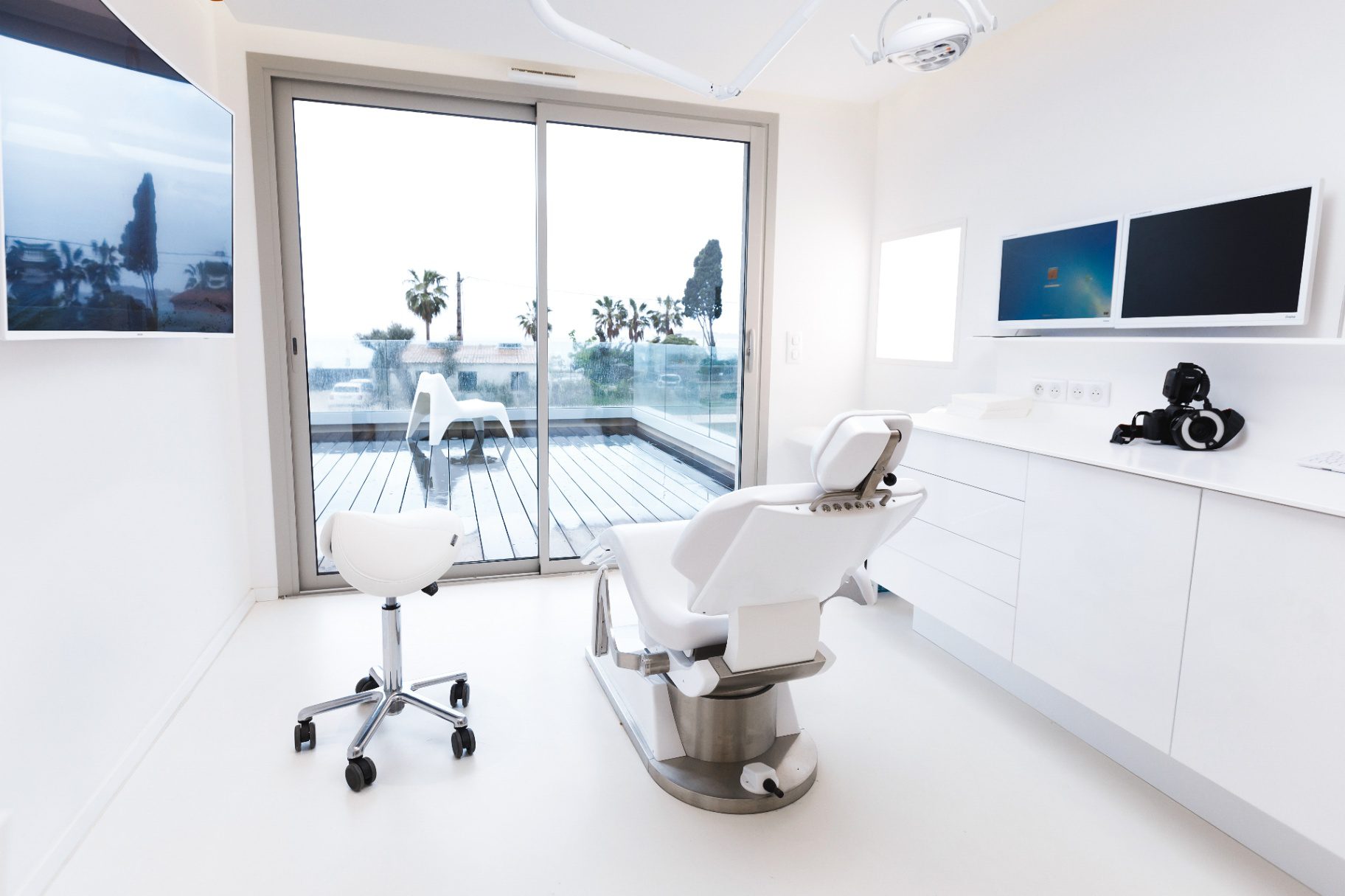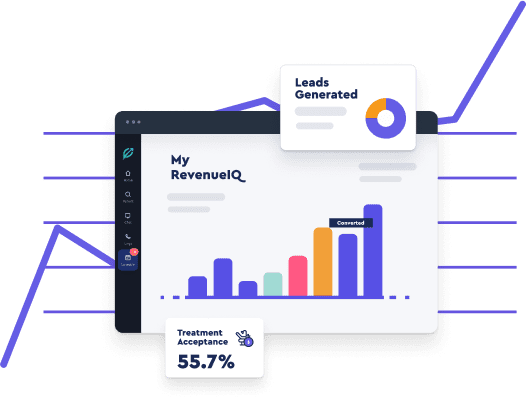How To Boost Revenue with Smarter Patient Scheduling?

Your Dental Office Isn’t Busy—It’s Mismanaged.
If your front desk is constantly juggling calls, last-minute cancellations, and scheduling conflicts, it’s not just a sign of a packed day—it’s a sign of inefficiency. The reality is, a crowded office and an overwhelmed staff don’t mean your practice is thriving. They mean your systems need an upgrade.
And we’re not the only ones who think so. According to Grand View Research, the dental practice management software market is set to nearly double from $2.6 billion in 2023 to $5 billion by 2030. The shift to automation is happening fast, and practices that don’t adapt are falling behind.
Yet many offices still rely on outdated scheduling methods that create unnecessary friction. Patients expect seamless, digital booking—just like they do when scheduling flights or ordering groceries. Why should a dental appointment be any different?
While some practices have embraced AI-powered scheduling to eliminate inefficiencies, others remain stuck in time-consuming manual workflows. The longer you wait to automate, the more opportunities you miss. The question isn’t whether your practice should evolve—it’s how much longer you can afford to wait.
Why Traditional Scheduling Methods No Longer Work?

Manual scheduling is a system built for a different era. It might have worked when patient volumes were lower, expectations were simpler, and everything moved at a slower pace.
But today? It’s outdated, inefficient, and holding your practice back.
Here’s why:
1. Phone-Based Scheduling Creates Bottlenecks
Think about how long it takes to book a single appointment over the phone.
A patient calls, waits on hold, asks about availability, checks their own schedule, and—if they need to reschedule—repeats the whole process. Multiply that by dozens of calls per day, and suddenly your front desk is drowning in a never-ending cycle of phone tag.
Meanwhile, patients who don’t have time to wait either give up or look elsewhere.
2. Human Error Leads to Double Bookings and No-Shows
Your team is juggling hundreds of appointment details, cancellations, and reschedules—mostly by hand.
Mistakes happen.
A front desk employee accidentally schedules two patients for the same slot, forgets to send a confirmation, or miscommunicates an appointment time.
The result? Frustrated patients, empty chairs, and lost revenue.
3. Lack of Real-Time Availability Causes Scheduling Conflicts
Manual systems don’t update in real-time, which means your front desk is always a step behind.
If a patient calls for a last-minute slot that was just taken, your team scrambles to find an alternative. If someone cancels, that opening often goes unfilled because there’s no automated process to notify waitlisted patients.
Every unfilled gap is lost revenue.
4. Limited Accessibility Hurts Patient Experience
Patients are used to instant access in every part of their lives—whether it’s booking a flight, ordering groceries, or making a restaurant reservation.
Yet many dental offices still require them to call during business hours to schedule an appointment. If they can’t get through, they move on.
5. Staff Burnout and Inefficiency
Your front desk team members aren’t just handling scheduling. They’re managing patient intake, insurance verification, and daily operations. With a strong staff, they can streamline these processes more effectively., even during times when staff members are absent due to sick days.
When they’re stuck answering endless phone calls and fixing scheduling mistakes, it pulls them away from higher-value tasks—like improving patient experience and ensuring the office runs smoothly.
Over time, this workload leads to burnout, lower job satisfaction, and high staff turnover. Here’s how:
- Increased patient expectations for digital convenience
- The impact of no-shows, cancellations, and appointment gaps
- Administrative overload and its cost to practices
How Does Automated Patient Scheduling Offer an Upper Hand?

By now, it’s clear—manual scheduling is outdated, inefficient, and costing your practice valuable time and revenue.
But why is automated patient scheduling the solution? Simple: it removes the administrative burden, optimizes your workflow, and ensures a seamless patient experience while enhancing administrative efficiency and patient care, which is a critical factor for any successful practice.
Let’s break down exactly how automation takes the workload off your team’s plate, eliminates scheduling inefficiencies, and transforms your practice operations.
1. Precision Scheduling with AI-Driven Optimization
Traditional scheduling is reactive—staff manually fill slots, adjust for last-minute cancellations, and manage availability across providers.
AI-powered scheduling transforms this process by analyzing patient patterns, provider schedules, and historical data to proactively optimize bookings. This ensures maximum efficiency, reducing idle time while preventing overbooking.
2. Eliminating Scheduling Bottlenecks and Revenue Leaks
Every missed call, delayed response, or manual rescheduling request creates inefficiencies that cost time and revenue.
Automated scheduling operates in real-time, dynamically adjusting based on cancellations, provider availability, and patient preferences. It eliminates back-and-forth coordination, ensuring a frictionless booking experience while keeping your schedule full.
3. Intelligent Patient Engagement to Minimize No-Shows
AI doesn’t just send reminders—it analyzes patient behavior to predict no-show risks and triggers the right engagement strategy.
High-risk patients can receive follow-up reminders, rescheduling options, or incentives to confirm appointments. This data-driven approach significantly reduces appointment gaps, improving operational efficiency.
4. Seamless Integration with Practice Management Systems
Fragmented scheduling systems create administrative burdens and errors.
AI-powered scheduling integrates with PMS, billing platforms, and patient management systems, ensuring that every appointment is linked to medical records, payment processing, and operational workflows—eliminating redundancies and manual updates.
5. AI-Powered Multilingual Communication for Accessibility
Language barriers shouldn’t impact scheduling efficiency. AI-powered translation ensures that patients can book, reschedule, and receive confirmations in their preferred language, improving accessibility, reducing miscommunication, and enhancing patient satisfaction.
6. Scalability Without Added Workload
Manual scheduling strains staff as patient volumes grow.
AI-driven scheduling scales effortlessly, handling higher appointment loads without increasing administrative overhead. Whether managing multi-location practices or expanding patient access, automation ensures smooth, efficient scheduling without added complexity.
How to Choose the Right Patient Scheduling Software?

So, you’re ready to switch from manual scheduling to online scheduling or automation—but how do you make sure this shift doesn’t turn into another costly misstep or an added task on your already packed checklist?
The answer isn’t just picking software with the most features. It’s about identifying what truly moves the needle for your practice—the tools that save time, reduce no-shows, and improve patient experience without unnecessary complexity.
Every time a dental office manager asks us how to get this right, we recommend focusing on these key factors:
1. AI-Driven Scheduling Intelligence
Look for a system that goes beyond basic time slot management. Intelligent automation can dynamically adjust schedules based on real-time cancellations, predicted no-shows, and patient preferences.
To optimize booking times and minimize scheduling gaps while increasing patient visits to ensure patients are seen at the scheduled time, AI-powered scheduling should do the following-
- analyze patient behaviour
- appointment trends,
- and provider availability
2. Deep Integration with PMS
Your scheduling software must sync bi-directionally with your Practice Management System (PMS).
This ensures that appointment data flows seamlessly, making it the first step in streamlining patient records, billing, and communication tools, eliminating manual data entry and reducing errors.
3. Real-Time Automated Reminders & Follow-Ups
A patient scheduling system doesn’t just send generic reminders—it automatically adjusts follow-ups based on patient behavior and ensures that patients’ appointment status is updated.
Having a staff member manage this process is crucial. If a patient ignores the first reminder, the system should escalate to a phone call or text. If a no-show occurs, the system should trigger an instant rescheduling prompt to recover lost appointments, saving significant time.
4. Multi-Channel Patient Access & Self-Scheduling
New patients expect a modern, digital experience of frictionless medical appointment scheduling for their patient appointments.
Choose software that offers 24/7 online self-scheduling across multiple channels—your website, patient portal, mobile app, and even AI-powered phone booking. The system should also handle reschedules and cancellations effortlessly without requiring staff intervention.
5. Advanced No-Show Prediction & Load Balancing
A truly effective solution uses machine learning to predict no-shows and last-minute cancellations based on patient history. The system should ensure clear communication to intelligently adjust the scheduling process, offering overbooking options or last-minute fill-in opportunities to keep providers fully booked without causing longer wait times or bottlenecks.
6. AI-Powered Call Handling & Virtual Assistance
Missed calls mean lost appointments. AI-driven call handling can analyze patient inquiries, transcribe calls, detect sentiment, and automate appointment bookings—ensuring no lead slips through the cracks. This process provides valuable data for facilities. A virtual assistant can also handle appointment confirmations, cancellations, and reschedules in real time.
7. Compliance & Data Security
Patient scheduling software must be HIPAA-compliant with strong encryption, audit trails, and role-based access controls. Ensure the platform meets industry security standards and offers automated consent management for patient communications.
8. Multi-Location & Provider Coordination
For multi-location practices, the system must centralize scheduling while managing providers’ specific availability, locations, and primary care specialty-based booking. Patients should be able to book with the right provider at the right location seamlessly.
9. AI-Powered Translation for Multilingual Support
If your practice serves a diverse patient base, built-in AI translation for scheduling interfaces, SMS reminders, and call transcripts ensures accessibility, reducing miscommunication and improving patient satisfaction.
10. Actionable Analytics & Reporting
Your scheduling software should provide real-time dashboards and predictive analytics to track key metrics: appointment volume, no-show rates, cancellation trends, provider utilization, and revenue impact. AI-powered insights help you make data-driven decisions to optimize scheduling efficiency.
How to Find All These Features in One Place?
 Switching to automation shouldn’t mean trial and error with multiple tools. The key is finding a solution that directly addresses the daily challenges dental office managers face. That’s exactly why we built Practice by Numbers—a system designed to solve these problems seamlessly.
Switching to automation shouldn’t mean trial and error with multiple tools. The key is finding a solution that directly addresses the daily challenges dental office managers face. That’s exactly why we built Practice by Numbers—a system designed to solve these problems seamlessly.
Before committing, sign up for a free demo and see firsthand how it integrates with your workflow, eliminating inefficiencies and optimizing your practice from day one.
Conclusion
If your practice still relies on manual scheduling, you’re not just wasting additional time—you’re losing revenue, patients, and efficiency. Every missed call, scheduling error, and no-show eats into your bottom line. AI-driven scheduling eliminates these bottlenecks by optimizing appointment management, predicting cancellations, and integrating seamlessly with your EHR and practice management systems.
The reality is simple: practices that embrace automation run more efficiently, reduce no-shows, and maximize revenue. Those that don’t? They fall behind. Smarter scheduling isn’t just an upgrade—it’s a competitive advantage. The longer you wait, the more you lose. The time to automate is now.
Frequently Asked Questions
How does AI-driven scheduling improve appointment efficiency in a dental practice?
AI-driven scheduling analyzes patient behavior, appointment trends, and provider availability to optimize booking times. It predicts no-shows, dynamically adjusts schedules based on cancellations, and balances patient load. By integrating real-time data with EHR systems, it eliminates scheduling bottlenecks, ensuring that providers operate at maximum capacity while enhancing the quality of care and reducing administrative workload.
How does automated scheduling software reduce no-shows and last-minute cancellations?
Automated scheduling software uses machine learning to identify high-risk no-show patients based on historical attendance patterns. It triggers targeted reminders via SMS, email, or phone calls, escalating follow-ups when necessary. The system can also fill last-minute cancellations by alerting waitlisted patients, minimizing revenue loss and keeping provider schedules fully utilized.
How does AI-powered call handling enhance scheduling automation?
AI-powered call handling transcribes patient inquiries, detects sentiment, and automates appointment bookings through voice recognition. It ensures that missed calls do not result in lost appointments by capturing patient intent and completing scheduling tasks in real-time. This functionality reduces front-desk phone traffic while improving accessibility for patients who prefer phone-based interactions.
What role does real-time synchronization play in automated patient scheduling?
Real-time synchronization ensures that appointment data across the scheduling platform, EHR, and practice management systems remain consistent. When a patient books or cancels an appointment, the system instantly updates provider availability. This prevents double bookings, improves coordination across multiple locations, and ensures front-desk staff are not manually reconciling schedules.
Why is deep integration with PMS essential for automated scheduling?
Deep integration ensures a seamless flow of patient information between scheduling, clinical, and billing systems, including telemedicine visits. It eliminates the need for manual data entry, reducing errors and administrative workload. This connectivity also allows for appointment-linked patient records, real-time insurance verification, and automated billing updates, improving both operational efficiency and patient experience.
Are you ready to revolutionize your practice? Schedule a demo today!
Together, we can elevate the patient experience and redefine the standard of excellence in dental practices nationwide.




